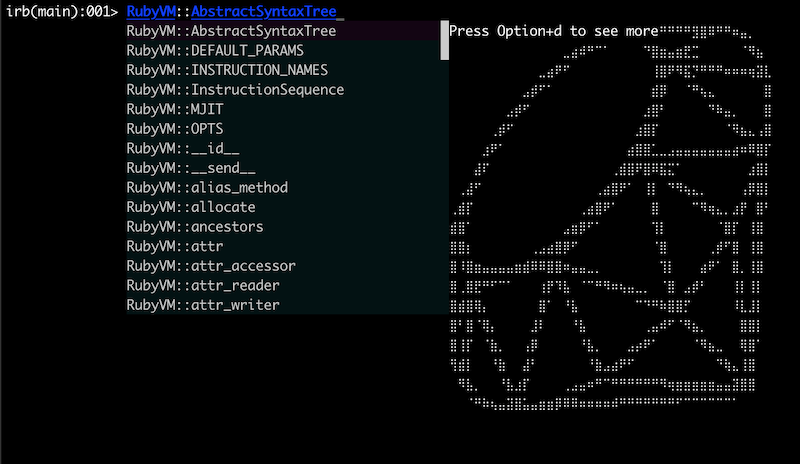Irb's Easter Egg
If you’ve used Ruby for more than 5 minutes, you’ve probably come across the IRB gem or it’s popular counterpart Pry. Both of these provide a REPL to explore and execute Ruby code.
IRB is old - nearly as old as the language itself in fact. For a mature library like this, I would expect a slow development cycle mostly comprised of incremental improvements, bug fixes, and performance enhancements. Imagine my surprise then when I stumbled on the following Easter egg that was added in 2020:

Instead of generating autocomplete suggestions for any module or class in the RubyVM namespace, IRB shows an ASCII easter egg.
This makes sense when you realize that the RubyVM class is a special one. It’s only defined in MRI ruby and provides access to the internals of the interpreter itself. This is dangerous territory and the offical docs warn: “Normal users must not use it.” In order to disable this behavior, you can set the aptly named environment variable RUBY_YES_I_AM_NOT_A_NORMAL_USER.
The RubyVM class itself only defines one method - stat - which keeps track of some counters like the number of global constants defined. The only other contents of this namespace are a few constants and the AbstractSyntaxTree and InstructionSequence classes used to turn Ruby code into instructions for the VM.
It turns out that the ASCII ruby is just a fun way to ward off unsuspecting users from Ruby internals. There is still one mystery that remains unsolved however: there’s an animated version which (as far as I can tell) isn’t used anywhere:
